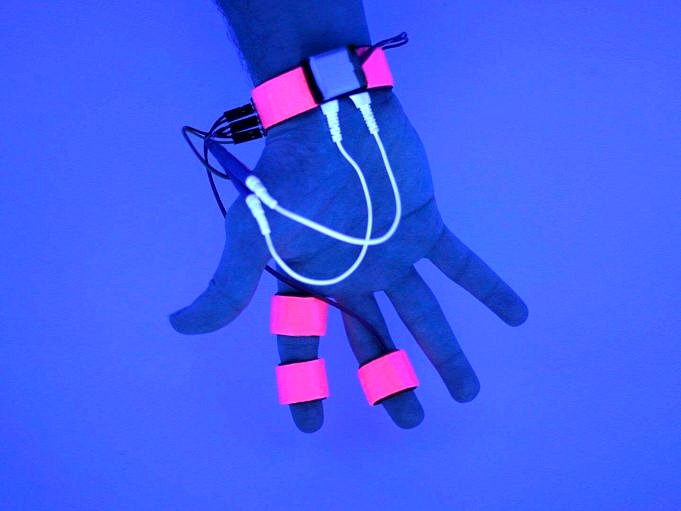Technology might be reaching an entirely new level. Adam Horowitz is leading a team at MIT that has created a machine that allows people to interface with their sleep. In other words, you can manipulate your sleep state and potentially control your dreams.
Let’s go back a moment. Theres a sleep stage not talked about often in the sleep industry world. Thats the semi-lucid hypnagogia stage of sleep, where hallucinations are said to occur, and creativity is at its peak. Its sort of the blurry stage between being awake and falling into deep sleep, and people rarely remember any micro-dreams that occur during this stage.
Thats what this machine, called Dormio, is working to manipulate.
How does it work, exactly?
The Dormio system includes a hand-worn device that looks sort of like a glove. The wearer puts the device on and it starts tracking biosignals, such as heart rate and muscle relaxation, to determine when they are entering the hypnagogia phase and when they are about to exit. This is the most important part. When the wearer enters deep sleep, Dormio emits a pre-programmed phrase to push them back into hypnagogia. What is the coolest thing? The best part? Subjects can actually recall dreams that contained these words, rabbit or fork.
As of right now, Horowitz has tested the device on eight subjects and discovered it can increase the amount of time wearers stay in the hypnagogia stage, the place between wakefulness and sleep. The machine can shape dreams, which is even more impressive. Dormio could say cupcakes or tequila. This could lead to positive manipulations of the creative dream state.
As Horowitz himself says:
This project has both philosophical and practical ends. I have no doubt that Hypnagogia holds applications for augmenting memory, learning, and creativity. However, it is a profoundly valuable and inspiring way to see yourself, which I found to be impossible to access before.
This device is not perfect. It is still being tested by the team to find other ways to make it less intrusive and more affordable. They also experiment with different types of sensors and are trying to track biosignals using eyelid movement rather than having people wear bulky metal gloves.
Plus, there are still many scientific controversies around what exactly the hypnagogia stage of sleep is, and how to determine when people are actually asleep.
Remember, the gadget was only tested on eight people and it is not clear what the demographics are.
Some might think controlling your dreams is cool, and others might think its creepy. It doesn’t matter what your opinion, the interesting thing is that technology is being used more to understand our sleep patterns and improve our experience.
Image from www.extremetech.com



